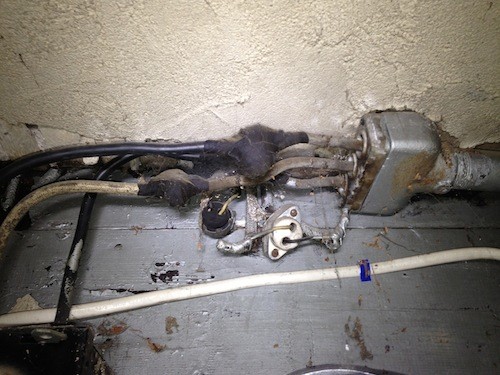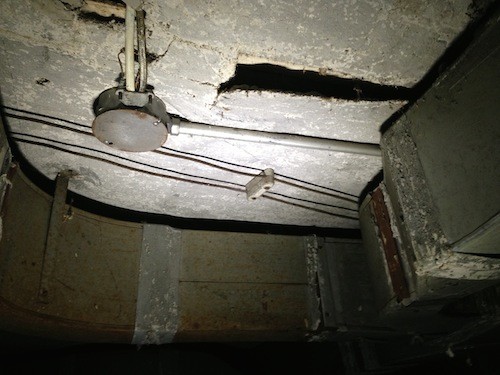Does Your Home Have Knob and Tube Electrical Wiring?
Knob and tube wiring inspections and replacement in Boston, Massachusetts.
When insurance companies changed their rules for older wiring, home buyers were left with a need for more information about what they were buying. “Knob and tube” describes an un-grounded wiring method used for lighting and power in buildings from about 1880 to the 1930’s. The name refers to the two ceramic insulating devices used in the wiring; the “knob” and the “tube.”
 The knob was used to hold the open conductor away from the surrounding material. The knob was also used when the conductor needed to turn a corner, as shown here. The tube was used to isolate the wire when it passed through surrounding material.
The knob was used to hold the open conductor away from the surrounding material. The knob was also used when the conductor needed to turn a corner, as shown here. The tube was used to isolate the wire when it passed through surrounding material.
Many houses in the Metro-Boston region are well over 100 years old and were wired with the knob and tube system. During renovations, contractors often come across knob and tube wiring within walls and ceilings. Although not necessarily illegal, the older system may not be safe.
National Electrical Code (NEC) Article 394.12-5
 National Electrical Code (NEC) article 394.12-5 does not allow thermal insulation to be added to wall or joist cavities that have knob and tube wiring, since the insulation increases the risk of the wiring overheating and causing a fire. Unfortunately many homeowners are unaware they have knob and tube wiring in their walls, and add insulation to reduce their household heating and cooling costs, exposing themselves to the risk of fires from the overheating conductors. Therefore, today it is common for insurance companies to require all knob and tube wiring to be removed when new owners take possession.
National Electrical Code (NEC) article 394.12-5 does not allow thermal insulation to be added to wall or joist cavities that have knob and tube wiring, since the insulation increases the risk of the wiring overheating and causing a fire. Unfortunately many homeowners are unaware they have knob and tube wiring in their walls, and add insulation to reduce their household heating and cooling costs, exposing themselves to the risk of fires from the overheating conductors. Therefore, today it is common for insurance companies to require all knob and tube wiring to be removed when new owners take possession.
For more information on knob and tube wiring, or if you need to evaluate whether your home has it please contact us. We also provide home inspections for new purchases to determine if your new home in Boston or surrounding areas has potential safety concerns or code violations.

Comments are closed.